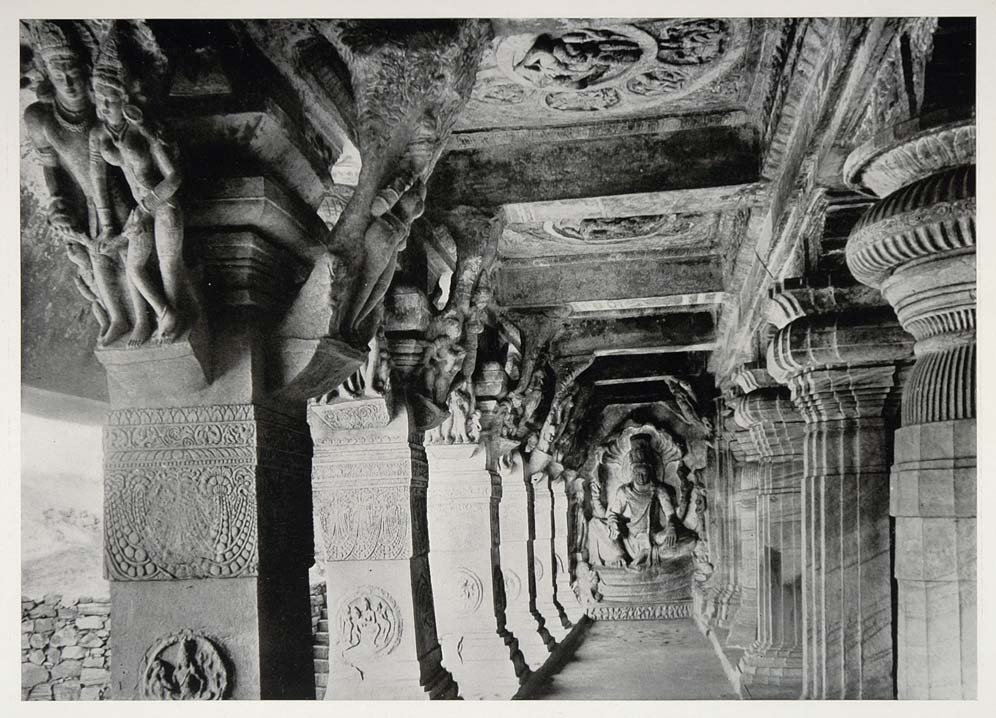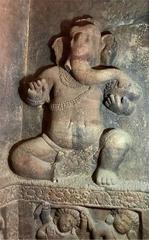
Visiting Badami Cave Temples: Hours, Tickets, and Tips
Date: 18/08/2024
Introduction
The Badami Cave Temples, situated in the picturesque town of Badami in Karnataka, India, stand as a remarkable testament to the architectural prowess and artistic heritage of ancient India. These rock-cut temples, dating back to the 6th century CE, were constructed during the reign of the Chalukya dynasty, who ruled much of Karnataka from the 6th to the 8th century CE (Wikipedia). Originally known as Vataapi, Badami served as the capital of the Chalukya dynasty, underlining its historical significance. The construction of these temples began with Pulakeshi I and was further developed by his successors, including Kirtivarman I and Mangalesha (Maverick Bird).
The Badami Cave Temples are celebrated for their intricate rock-cut architecture, which involves carving structures directly out of solid natural rock. This style is akin to other renowned Indian cave complexes such as the Ajanta and Ellora Caves, and the temples are carved out of the soft Badami sandstone prevalent in the surrounding cliffs (Facts.net). The temples are adorned with elaborate carvings, sculptures, and murals that depict various scenes from Hindu mythology and daily life, showcasing the artistic brilliance of the period (Astroved).
The complex comprises four main caves, each dedicated to different deities and religious traditions, reflecting the religious harmony and cultural richness of the era. These include caves dedicated to Lord Shiva, Lord Vishnu, Lord Mahavira, and a Jain temple (Facts.net). Today, the Badami Cave Temples are not only an important historical site but also a popular tourist destination, drawing visitors from around the world to marvel at their historical significance, architectural beauty, and natural surroundings (Facts.net).
Table of Contents
- Introduction
- Origins and Early Development
- Founding and Construction
- Architectural Significance
- Inscriptions and Dating
- Religious and Cultural Context
- Artistic Brilliance
- Influence and Legacy
- Preservation and Modern Recognition
- Historical Events and Changes in Rule
- Modern-Day Significance
- Visitor Information
- FAQs
- Conclusion
A Complete Guide to the Badami Cave Temples: History, Visiting Hours, and Tickets
Introduction
The Badami Cave Temples are a remarkable testament to the architectural brilliance and artistic heritage of ancient India. Nestled in the town of Badami in Karnataka, these rock-cut temples attract history buffs, architecture enthusiasts, and curious travelers alike. This comprehensive guide will walk you through the rich history, architectural marvels, visiting hours, ticket information, and travel tips, ensuring you have all the details you need for a memorable visit.
Origins and Early Development
The origins of the Badami Cave Temples date back to the 6th century CE, during the reign of the Early Chalukyas, who ruled much of Karnataka from the 6th to the 8th century CE. Badami, formerly known as Vataapi, served as the capital of the Chalukya dynasty (Wikipedia).
Founding and Construction
The foundations of Badami were laid by Pulakeshi I (535–566 CE), who established the city as the capital. His son, Kirtivarman I (567–598 CE), further embellished the town with temples and other buildings. The construction of the cave temples was completed by Mangalesha (598–610 CE), the brother of Kirtivarman I (Maverick Bird).
Architectural Significance
The Badami Cave Temples are renowned for their rock-cut architecture, which involves carving structures directly out of solid natural rock. This architectural style is similar to other famous Indian cave complexes, such as the Ajanta and Ellora Caves. The temples are carved out of the soft Badami sandstone, which is prevalent in the surrounding cliffs (Facts.net).
Inscriptions and Dating
The exact dating of the Badami Cave Temples is known primarily through inscriptions found within the complex. One of the most significant inscriptions is located in Cave 3, a temple dedicated to Vishnu. This inscription, written in old Kannada, records the dedication of the shrine by Mangalesha in Saka 500 (578/579 CE). This makes Cave 3 the oldest firmly dated Hindu cave temple in India (Wikipedia).
Religious and Cultural Context
The Badami Cave Temples are a complex of four main caves, each dedicated to different deities and religious traditions. The first cave is dedicated to Lord Shiva, the second to Lord Vishnu, the third to Lord Mahavira, and the fourth is a Jain temple. This diversity reflects the religious harmony and cultural richness of the period (Facts.net).
Artistic Brilliance
The temples are adorned with intricate carvings, sculptures, and murals that depict various scenes from Hindu mythology and daily life. The first cave, dedicated to Lord Shiva, features a magnificent carving of an 18-armed Nataraja (Shiva in his cosmic dance form). The ceiling of this cave is adorned with murals of couples depicted in amorous positions, which are remarkably well-preserved despite the passage of time (Astroved).
Influence and Legacy
The architectural style of the Badami Cave Temples had a significant influence on the development of temple architecture in the Indian subcontinent. The Chalukyan style, characterized by a blend of North Indian Nagara and South Indian Dravidian architectural elements, can be seen in later temple complexes such as those at Pattadakal and Aihole (Solitary Wanderer).
Preservation and Modern Recognition
Despite the passage of centuries, the Badami Cave Temples have withstood the test of time and remain well-preserved. This is a testament to the precision and craftsmanship of the ancient builders. Today, the temples are maintained by the Archaeological Survey of India (ASI) and are candidates for UNESCO World Heritage Site status (Revolving Compass).
Historical Events and Changes in Rule
Throughout its history, Badami changed hands multiple times. After the fall of the Chalukyas, the town was ruled by the Vijayanagar Kings, the Adil Shahis, the Savanur Nawabs, the Marathas, and Hyder Ali. The British eventually made Badami a part of the Bombay Presidency (Maverick Bird).
Modern-Day Significance
Today, the Badami Cave Temples are a popular tourist destination, drawing visitors from around the world. The combination of historical significance, architectural beauty, and natural surroundings makes it a must-visit site for history enthusiasts and tourists alike (Facts.net).
Visitor Information
- Visiting Hours: The Badami Cave Temples are open from 9:00 AM to 5:30 PM daily. It is advisable to visit early in the morning to avoid crowds.
- Tickets: The entry fee for the Badami Cave Temples is INR 25 for Indian citizens and INR 300 for foreign tourists. Children below 15 years can enter for free.
- Accessibility: The site has uneven terrain and steep steps, making it challenging for visitors with mobility issues.
- Travel Tips: Carry water, wear comfortable shoes, and consider hiring a local guide for a more informative experience.
- Nearby Attractions: Don’t miss visiting the Agastya Lake, Bhutanatha Group of Temples, and the Badami Fort.
FAQs
Q: What are the Badami Cave Temples? A: The Badami Cave Temples are a complex of rock-cut temples located in Badami, Karnataka, dating back to the 6th century CE.
Q: How many caves are there in the Badami Cave Temples? A: There are four main caves, each dedicated to different deities and religious traditions.
Q: What is the best time to visit the Badami Cave Temples? A: The best time to visit is during the cooler months, from October to March.
Q: Are there any charges for photography? A: Yes, there is an additional fee for photography, which varies based on the type of camera used.
Q: Is there a guide facility available at the site? A: Yes, local guides are available, and it is recommended to hire one for a more enriching experience.
Conclusion
The Badami Cave Temples are a magnificent example of ancient Indian rock-cut architecture and a significant cultural heritage site. Constructed during the Chalukya dynasty’s reign, these temples reflect the architectural ingenuity, artistic brilliance, and religious diversity of the period. The temples have withstood the test of time, thanks to the precision and craftsmanship of their ancient builders and the conservation efforts by the Archaeological Survey of India (Revolving Compass).
The Badami Cave Temples’ influence on later architectural styles is evident in other Chalukyan sites such as Pattadakal and Aihole, showcasing a blend of North Indian Nagara and South Indian Dravidian architectural elements (Solitary Wanderer). As a UNESCO World Heritage candidate, the temples continue to attract historians, architects, and tourists alike, offering a unique glimpse into India’s rich historical and cultural legacy (Revolving Compass).
Visiting the Badami Cave Temples is not just a historical exploration but also an opportunity to experience the enduring legacy of a bygone civilization. With comprehensive visitor information, including visiting hours, ticket prices, and travel tips, this guide aims to provide all the necessary details for a fulfilling trip. Plan your visit to the Badami Cave Temples today and immerse yourself in the rich history and stunning architecture of this ancient marvel.
References
- Badami Cave Temples, Wikipedia https://en.wikipedia.org/wiki/Badami_cave_temples
- Badami Travel Guide and Tips, Maverick Bird http://www.maverickbird.com/india/south/karnataka/badami-travel-guide-and-tips/
- 16 Extraordinary Facts About Cave Temples of Badami, Facts.net https://facts.net/world/landmarks/16-extraordinary-facts-about-cave-temples-of-badami/
- Badami Cave Temples, Astroved https://www.astroved.com/astropedia/en/temples/south-india/badami-cave-temples
- Exploring the Cave Temples of Badami, Revolving Compass https://revolvingcompass.com/exploring-the-cave-temples-of-badami/
- Badami Cave Temples, Solitary Wanderer https://www.solitarywanderer.com/badami-cave-temples-karnataka-india/



